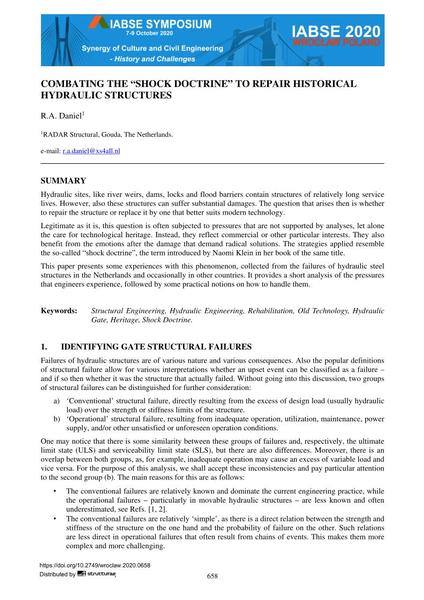Combating the "Shock Doctrine" to Repair Historical Hydraulic Structures

|
|
|||||||||||
Détails bibliographiques
| Auteur(s): |
R. A. Daniel
|
||||
|---|---|---|---|---|---|
| Médium: | papier de conférence | ||||
| Langue(s): | anglais | ||||
| Conférence: | IABSE Symposium: Synergy of Culture and Civil Engineering – History and Challenges, Wrocław, Poland, 7-9 October 2020 | ||||
| Publié dans: | IABSE Symposium Wroclaw 2020 | ||||
|
|||||
| Page(s): | 658-665 | ||||
| Nombre total de pages (du PDF): | 8 | ||||
| Année: | 2020 | ||||
| DOI: | 10.2749/wroclaw.2020.0658 | ||||
| Abstrait: |
Hydraulic sites, like river weirs, dams, locks and flood barriers contain structures of relatively long service lives. However, also these structures can suffer substantial damages. The question that arises then is whether to repair the structure or replace it by one that better suits modern technology. Legitimate as it is, this question is often subjected to pressures that are not supported by analyses, let alone the care for technological heritage. Instead, they reflect commercial or other particular interests. They also benefit from the emotions after the damage that demand radical solutions. The strategies applied resemble the so-called “shock doctrine”, the term introduced by Naomi Klein in her book of the same title. This paper presents some experiences with this phenomenon, collected from the failures of hydraulic steel structures in the Netherlands and occasionally in other countries. It provides a short analysis of the pressures that engineers experience, followed by some practical notions on how to handle them. |
||||
